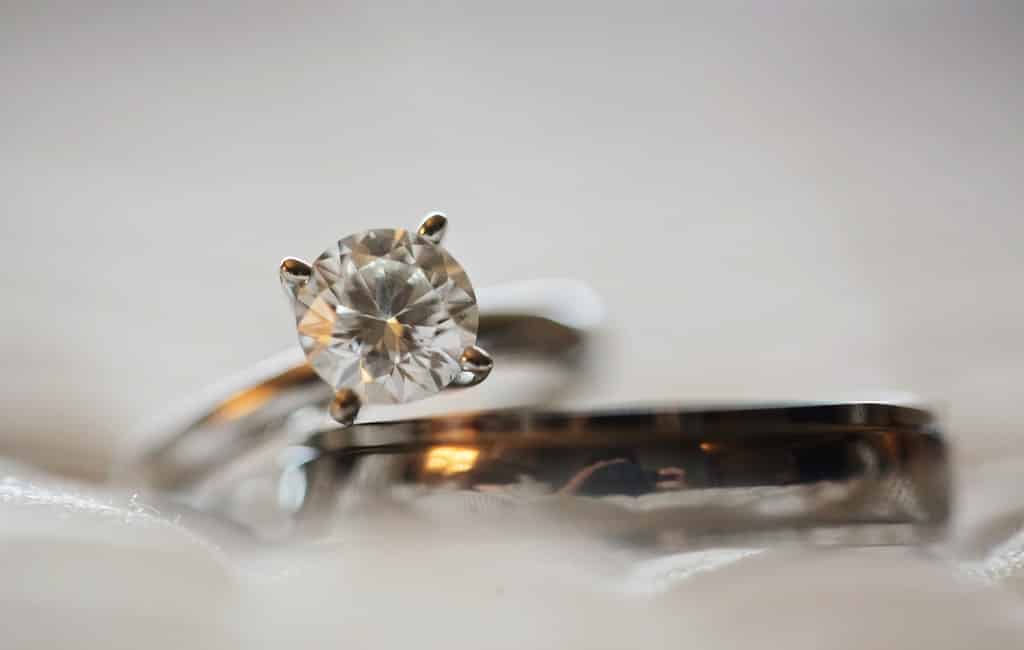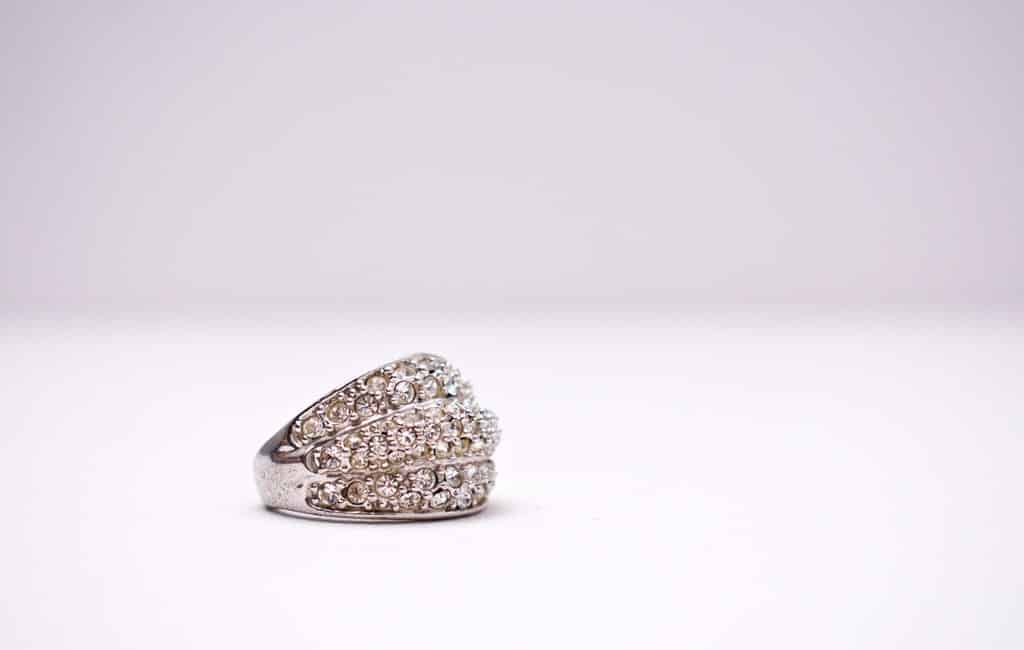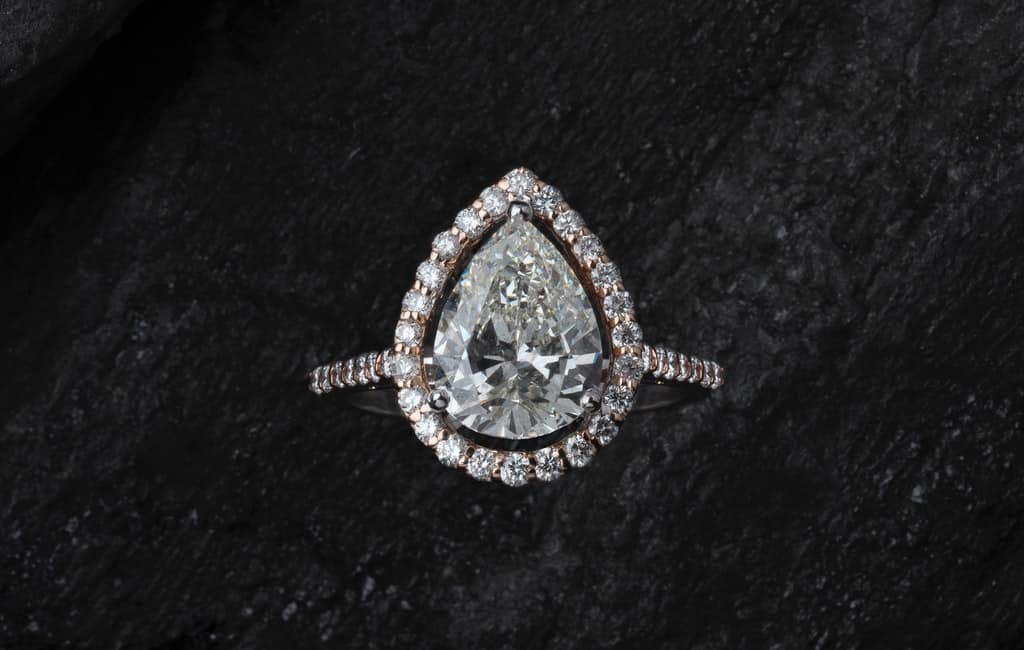Diamonds are the hardest substances known to man. They are very distinct – yet very popular – gemstones, which occur naturally underneath the earth’s crust. Diamonds form on their own in nature when elemental carbon is exposed to very high pressure over the course of numerous years (millions and maybe even billions of it). Diamonds are mined when they are dug out from underneath the earth’s crust by various means; and they are used extensively in the jewelry industry, where they are used as precious gemstones, to adorn items such as rings, necklaces, errings, bracelets and crowns.

HOW ARE DIAMONDS FORMED?
When elemental carbon beneath the earth’s crust is exposed to extremely strong forces such as high pressure and high heat, the process of diamond formation begins. This process takes place over a very long time (several millions and even billions of years) in nature, because it basically involves the transformation of elemental carbon atoms into rigid crystal lattices; which do not allow any other element to infiltrate it easily. This arrangement of carbon atoms into rigid crystal lattices is what makes the hard substance of the diamond itself.
Apart from diamond, elemental carbon occurs naturally in one other form, which is known as graphite. Graphite is the amorphous form of carbon, which occurs in nature as a black material that is much softer compared to carbon. This amorphous form of carbon is nowhere as strong as its other counterpart (i.e. diamonds), and it is not a precious stone or even a gemstone, because it lacks the necessary characteristics (i.e. stability, luster, shine after polishing and ornamental value, among others).
Diamonds have a wide application in many industries, particularly the jewelry industry and the mining industry. In the jewelry industry, they are used to adorn or decorate pieces like crowns, necklaces, earrings and rings. Diamonds are particularly notorious in their usage for rings. This is because they are the hardest known materials on earth and as such, are very resistant to all forms of corrosion and deterioration; therefore, they are said to last forever. A large percentage of people around the world prefer to buy diamond rings for their engagements and weddings because of that notion that diamonds last forever; which, sentimentally and symbolically, should indicate that the engagement or marriage also will (last forever).
Diamonds are also used industrially in the drilling industry, as a result of their remarkable hardness.
WHAT ARE THE TYPES OF DIAMONDS?
Diamonds are rare. They only occur in 35 known countries on earth and they are usually not found in many places even within those countries. There are different types of diamonds, depending on several factors which include the following:
- How they are formed
The mode of formation of diamonds plays a crucial part in their classification. Under this category, diamonds can either be classified as natural or lab-grown.
Natural diamonds are the types of diamonds that occur naturally beneath the earth’s crust. They are formed over the course of several millions and billions of years, during which carbon is subjected to immense pressure and heat beneath the earth’s crust. A lot of diamonds can also be formed around areas were volcanoes have once erupted, as the incredible heat generated by hot lava, as well as carbon residues are very often among the catalysts and materials responsible for kick-starting the process of diamond formation.
Lab-grown diamonds, on the other hand, are diamonds that are formed in laboratories when all the materials needed to form diamonds are assembled in artificially created conditions which are similar to the natural forces that are responsible for forming natural diamonds. These laboratory conditions mimic natural forces well, in a manner that hastens the diamond formation process (so that this way, the formation of diamonds is completed within a relatively short time, and not millions or billions of years).
- The color of the diamond formed
Diamonds can also be classified based on their color. This is because diamonds occur naturally in different colors which include yellow, green, blue, purple, brown, red and black among others. This wide range of colors depends of several factors which include: the location where the diamonds are mined from (e.g. Argyle Mines, which is famous for the abundance of red diamonds), the type of element, impurity or flaw which managed the breach the crystal lattice of the diamonds during their formation, and radiation.
The formation of several colors in diamonds such as yellow, blue, purple and orange, among others, can be attributed to the interference of elements such as nitrogen (i.e. for yellow diamonds), boron (i.e. for blue diamonds) and hydrogen (i.e. for purple diamonds). However, green diamonds occur naturally when a diamond is exposed to radiation during its formation process. Red diamonds are the rarest colors of diamonds, as well as the most expensive, however, colorless diamonds – which are also called white diamonds – are the most common.

ARE BLACK DIAMONDS RARE?
Black diamonds – or carbonados – are another rare type of diamonds. Black is not a very common color, as far as diamonds are concerned and black diamonds are only formed when certain inclusions make their way into a diamond’s crystal lattice while it (the diamond is still being formed).
There is one inclusion in particular which is chiefly responsible for the formation of this black color in carbonados; which is graphite (the natural amorphous form of carbon, which is much softer compared to diamond).
Black diamonds are one of the rarest forms of diamonds, which makes them a sharp contrast to white diamonds, which are the most regular types of diamonds. They can only be found naturally in two countries across the world, which are Brazil and the Central African Republic. And while this type of diamonds (black diamonds) have been considered mysterious in the past, these days, it is now possible for them to be produced synthetically in laboratories by making use of similar materials which form natural carbonados, and subjecting them to conditions which provide similar results to natural forces of extreme pressure and heat; which take place beneath the earth, during diamond formation.

